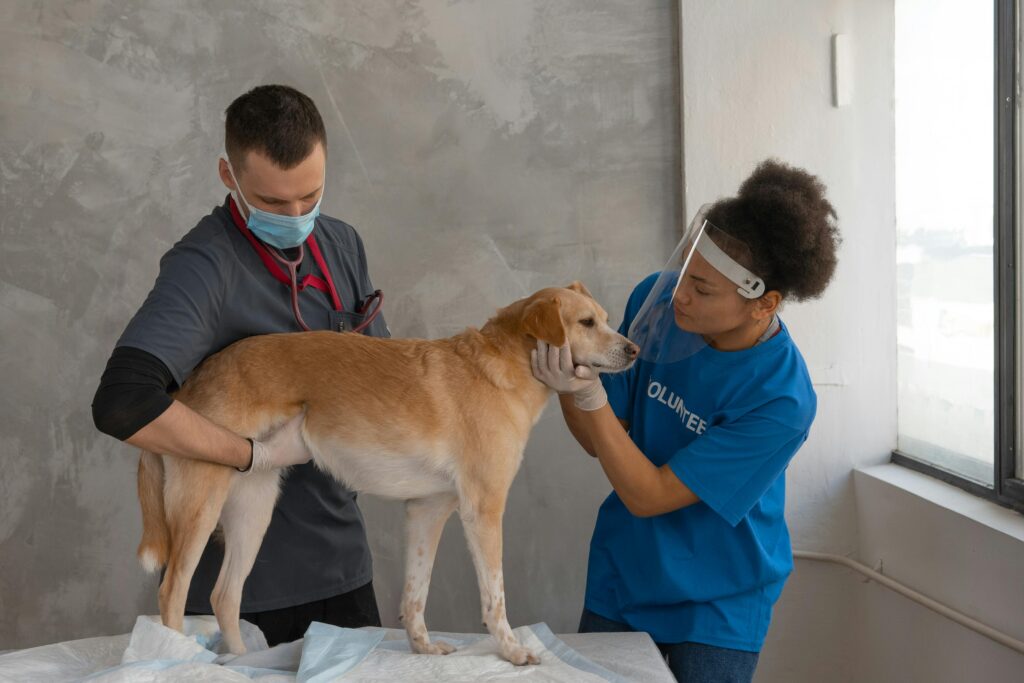It can be a scary time when your pet suddenly gets sick. This article unpacks the critical difference between routine, urgent, and emergency pet care, giving you the facts on costs and the most common reasons pet owners seek immediate veterinary attention.
How people take care of their pets has really changed lately. It’s super important to understand the ins and outs of veterinary care before any health issues pop up. You should know exactly where to take your dog or cat if they’re not feeling well. There’s a new facility that specializes in urgent health problems, and checking out your options and knowing the differences between them is essential.
Bridging the Gap in After-Hours Pet Health
Panic sets in when your dog or cat suddenly falls ill after dark. The primary veterinarian is closed, and you feel stuck between waiting until morning and rushing off blindly. Knowing exactly where to go saves precious minutes. The pet care specialists at Gastonia emergency vet know this and have streamlined the whole process to give you peace of mind.
Now there is an option designed precisely for this middle ground. Urgent care models handle non-life-threatening issues when your regular vet cannot see you. These clinics fill the service gap, providing quick, convenient, and affordable care every single day of the year. Prompt care becomes accessible regardless of a nine-to-five schedule.
The online process minimizes stress: save your spot online or just walk in. They escort you quickly into a private Fear-Free examination room. After the exam, they send the treatment plan directly to your regular veterinarian. A streamlined approach gives same-day attention and usually costs substantially less than the full emergency room rate.
When a Panic Button is Pressed
Pet owners rush for immediate care for a pretty wide range of sudden problems. Data confirms most emergency visits involve non-traumatic, internal medical conditions. Common sickness is the main cause, not accidents.
The three most frequent issues requiring emergency attention for both dogs and cats are stomach distress: vomiting, diarrhea, and dog bite wounds. While common, persistent symptoms can signal serious underlying issues that require immediate diagnosis. You should not wait to address persistent gastrointestinal upset.
But the truly life-threatening conditions demand a full-scale hospital response. Conditions like severe trauma (hit by a car), ingestion of potent toxic substances (like xylitol), difficulty breathing, or a urinary obstruction constitute true emergencies. Urgent care handles the ear infection; the hospital handles massive trauma. Pet owners must quickly assess symptom severity before heading out the door.
The Financial Shock of Immediate Care
Unexpected veterinary care carries a steep financial consequence for many households. The cost disparity between a routine visit and an emergency case is enormous. Specialist staffing, 24-hour operation, and necessary advanced diagnostics all contribute to the higher cost.
Advanced diagnostics are a key cost driver. X-rays, ultrasounds, and intensive blood work are standard procedures in a crisis. Hospitalization alone adds up fast; an overnight stay for a cat can cost up to $243, while dog fees range up to $567 per night. The total bill for an emergency case often spirals into thousands of dollars very quickly.
The national statistics reflect this reality. The average total bill for an emergency vet visit is approximately $653 for a dog and $919 for a cat, according to insurance claims data. The sudden financial shock often forces owners to confront difficult choices. Does your household budget include a contingency for a veterinary crisis?
Strategies for Preparedness and Peace of Mind
Being a responsible pet owner means planning ahead for health emergencies. It’s important to be financially ready for those unexpected vet bills. One of the best first steps is to set up a dedicated savings account just for your pet’s medical needs.
But there’s more to financial prep than just a savings account. Many pet owners choose to get pet insurance to help with the high costs of major surgeries and treatments. It’s really important to take the time to understand the policy details, like the deductible, how much they’ll reimburse you, and what conditions are covered. Doing this research can save you a lot of money in the long run.
Knowing the difference between your primary veterinarian, the local urgent care clinic, and the nearest full-service emergency hospital saves precious minutes. Who do you call at three in the morning when your dog swallows something dangerous? Having a clear answer prevents debilitating confusion and wasted travel time.
A Shift in Veterinary Access
The introduction of dedicated urgent care centers represents a significant shift in how pet medicine operates. The urgent care model acknowledges the modern consumer’s need for convenience and affordability in a fragmented healthcare system. It moves away from the old binary choice of a quick appointment or an expensive hospital visit.
The new tier of service brings specific specialization. It focuses resources entirely on providing fast, non-critical care for a high volume of patients. Lower overhead results, and savings pass directly to you. It also relieves pressure on full-scale emergency hospitals, allowing them to dedicate their specialized staff to the truly critical cases. Everyone benefits from this segmentation of care.
Pet care is shifting to improve the experience for your furry friends, especially during urgent visits. Many clinics now use Fear-Free features, like separate waiting areas for dogs and cats, to ease stress. With these comfort measures and flexible scheduling, unexpected vet trips can be much smoother. Keep the right contact info handy to be prepared for emergencies.

 Noranna Frazieral has played a crucial role in shaping the content for Animal Potty Care, focusing on pet diet and wellness. Her deep understanding of pet nutrition ensures that the platform offers well-rounded guidance on maintaining a balanced and healthy diet for pets. Noranna’s contributions help pet owners make informed decisions about their pets' diets, promoting long-term health and well-being. Her input has made the platform a trusted resource for those looking to improve their pets' quality of life.
Noranna Frazieral has played a crucial role in shaping the content for Animal Potty Care, focusing on pet diet and wellness. Her deep understanding of pet nutrition ensures that the platform offers well-rounded guidance on maintaining a balanced and healthy diet for pets. Noranna’s contributions help pet owners make informed decisions about their pets' diets, promoting long-term health and well-being. Her input has made the platform a trusted resource for those looking to improve their pets' quality of life.